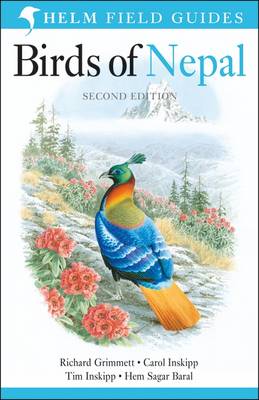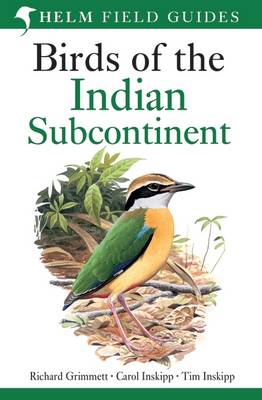Princeton Field Guides
3 total works
Birds of Nepal
by Richard Grimmett, Carol Inskipp, Tim Inskipp, and Hem Sagar Baral
Published 29 October 2000
From the streets of Kathmandu to the breathtaking Himalayas, Nepal is an extraordinary destination for ecotourists. This field guide provides an unrivaled introduction to the diverse birdlife of the region. Featuring more than 100 color plates by eminent bird illustrators from Europe and India, the guide depicts all the known species that occur regularly in Nepal as well as vagrants. The succinct text on the facing pages covers identification, voice, and distribution. This compact field guide is the one volume that every adventurous traveler to Nepal must have. It covers all 760 species in Nepal, including variation by age, sex, and subspecies. It includes 110 color plates with text on facing pages for at-a-glance identification. Concise text covers identification, voice, habitat, altitudinal range, distribution, and status. It also contains an Introduction covering habitats, birding areas, local organizations, and conservation.
Field Guide to the Birds of Northern India
by Richard Grimmett and Tim Inskipp
Published 28 November 2003
From the wet evergreen forests and alpine peaks of the Himalayas, to the Thar Desert and the vast wetlands, grasslands, and agricultural habitats that stretch to New Delhi and beyond, northern India is a diverse and welcoming paradise for birders and ecotourists. This field guide provides a concise, fully illustrated introduction to the region's known species. Species that occur regularly are illustrated on 120 color plates by eminent bird illustrators from Europe and India. Just a few of the most spectacular or very big birds include the Himalayan Snowcock, Great Slaty Woodpecker, Great Hornbill, Crested Kingfisher, Blue-Bearded Bee-eater, and Chestnut-winged Cuckoo. The illustrations show distinctive sexual and racial variations whenever possible, as well as immature plumages. Succinct entries on the facing pages highlight plumage, body length and other visible identification traits, voice, altitudinal range and habitats, distribution, and status. Thirty-five of the region's species are threatened with global extinction, in particular the White-rumped Vulture, Siberian Crane, Forest Owlet, Pink-headed Duck, and Himalayan Quail.
Introductory sections cover the region's geography and ecology, ten choice birdwatching areas among the many in northern India, plus conservation and general birding advice. Unusually detailed distribution maps are also included, and an appendix describes vagrants and rare species. Anyone contemplating a visit to this accessible, bird-rich region of the subcontinent will want this compact and user-friendly guide. It covers all species known in the region 120 color plates with concise text on facing pages for quick reference and easy identification. Concise entries describe appearance, voice, altitudinal range and habitat, distribution, and status. Introductory sections cover the region's geography and ecology, plus conversation and general birding advice.
Introductory sections cover the region's geography and ecology, ten choice birdwatching areas among the many in northern India, plus conservation and general birding advice. Unusually detailed distribution maps are also included, and an appendix describes vagrants and rare species. Anyone contemplating a visit to this accessible, bird-rich region of the subcontinent will want this compact and user-friendly guide. It covers all species known in the region 120 color plates with concise text on facing pages for quick reference and easy identification. Concise entries describe appearance, voice, altitudinal range and habitat, distribution, and status. Introductory sections cover the region's geography and ecology, plus conversation and general birding advice.
The best field guide to the birds of the Indian subcontinent is now even better. Thoroughly revised, with 73 new plates and many others updated or repainted, the second edition of Birds of India now features all maps and text opposite the plates for quicker and easier reference. Newly identified species have been added, the text has been extensively revised, and all the maps are new. Comprehensive and definitive, this is the indispensable guide for anyone birding in this part of the world. * The leading field guide to the birds of the Indian subcontinent--now thoroughly revised and improved *1,375 species illustrated and described, including all residents, migrants, and vagrants *226 color plates--including 73 new ones--depict every species and many distinct plumages and races * Concise text and accurate distribution maps opposite plates for easy reference * Includes newly identified species


